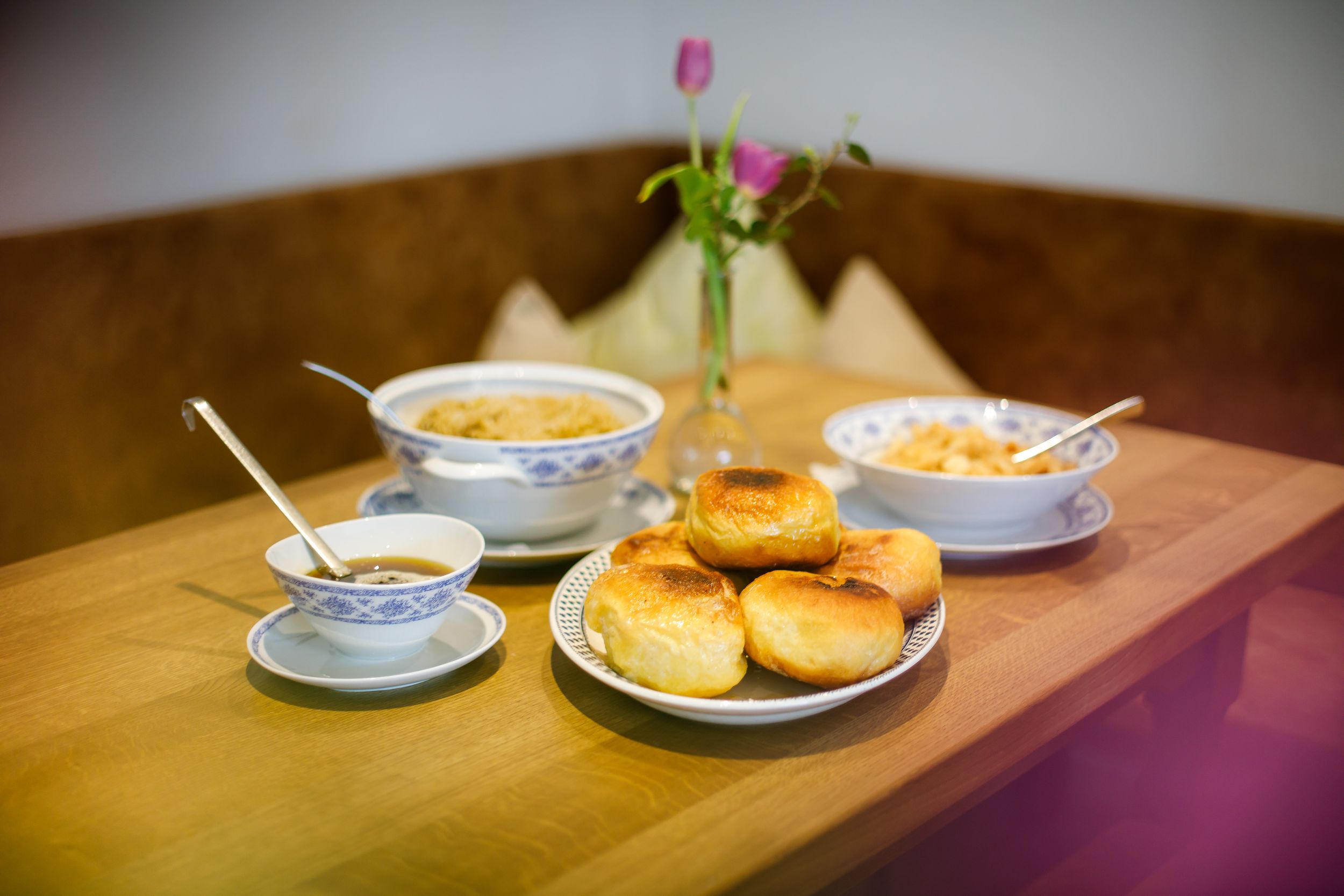Important information at a glance

The Butternudel Tamtam
An almost forgotten Ruhpolding speciality is celebrating its comeback at Café Chiemgau. “Butternudel ” dumplings made out of yeast dough, with compote or sauerkraut. Delicious!
Important information at a glance

An almost forgotten Ruhpolding speciality is celebrating its comeback at Café Chiemgau. “Butternudel ” dumplings made out of yeast dough, with compote or sauerkraut. Delicious!
It smells wonderfully of fresh pastries, sugar, chocolate, a hint of cinnamon and vanilla in Wolfgang Heigermoser’s warm bakery. The family has been running the patisserie on Hauptstraße for 60 years. The café was originally just a sideline to the farming business. The Heigermosers even still had their own cows until well into the 1960s. Wolfgang took over the business in 2003, the third generation of the family. Besides fine cakes, tarts and pralines, the 40-year old master confectioner also has “butternudel” dumplings on offer, if you order them in advance.
The famous delicacy in southern Chiemgau was served often in the past. Wolfgang is also familiar with it from his childhood and grandma. However, making “butternudel ” dumplings has always been considered to be tricky and laborious. Because the sensitive yeast dough needs time, doesn’t tolerate any draughts, likes it warm but not too hot. “It’s said that it’s far too much fuss and bother to make “butternudel ” dumplings and this opinion has stubbornly persisted,” says Wolfgang. But he doesn’t let this put him off. He uses a passed down traditional local recipe for his “butternudel ” dumplings, refined with a secret ingredient that cannot be coaxed out of him.
The master confectioner ties his white baking apron and sets out the ingredients: yeast, milk, wheat flour, eggs and lots of fresh butter. He already made the preferment an hour ago. For this, lukewarm milk is stirred with a pinch of sugar, fresh yeast and some of the flour until smooth, dusted with a tablespoon of flour, covered with a tea towel and left to rise. Wolfgang Heigermoser then kneads this together with the other ingredients into one dough. He leaves it to rest, kneads it again, leaves the dough to rest again and then finally forms individual dough balls by hand. He melts the butter with water in an old cast iron pan with wooden lid until it’s simmering and bubbling. He places the dough balls in this so that they are floating in two to three centimetres of fat and leaves them to fry for twenty minutes. “You must not take the lid off in the process,” warns the cheerful confectioner.
To finish, Heigermoser turns the “butternudel” dumplings over for a few more minutes. Whether they’re dished up dark and really crispy or preferably soft is a question of taste, as it what they’re served with. Some people eat them with compote, blackberries, vanilla sauce or jam, others prefer them with sauerkraut. Wolfgang Heigermoser also likes the savoury version, just like at grandma’s. There’s a good reason why “butternudel” dumplings are little calorie bombs. They used to feed lumberjacks and forest workers. There weren’t many vegetables, potatoes or other fresh products in the region in the olden days. Baked goods were essential ever- yday foods. When the lumberjacks had to work in the forest for a long time, they took the leftover clarified butter from the “butter- nudel” dumplings with them and used it to cook their “Muas”, a poor man’s meal with simple ingredients. In contrast to butter, clarified butter has a long shelf life and does not go rancid. Wolfgang Heigermoser’s “butternudel” dumplings don’t last long either. The group of guests is already waiting at the laid table. This yeast treat has been revived as a favour, a grandmother’s gift to her grandson. It was too much “Tamtam” (fuss) for the lady to make them herself. The confectioner grins and treats himself to a portion.